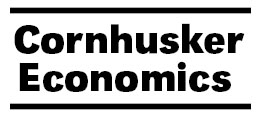Agricultural Economics, Department of

Cornhusker Economics
Date of this Version
3-6-2002
Document Type
Newsletter Issue
Citation
Cornhusker Economics
Abstract
Representatives of 142 countries met at the Fourth Ministerial Meeting of the World Trade Organization (WTO) in November 2001, in Doha, Qatar, and decided to launch a new round of trade talks. The WTO, the successor to the General Agreement on Tariffs and Trade (GATT), was launched in 1995 at the end of the Uruguay Round (1986-1994) with the goal of reducing or eliminating trade distortions. Prior to the Uruguay Round, agricultural trade was not fully subjected to international trade disciplines. The Uruguay Round Agreement on Agriculture (URAA), which included provisions on export subsidies, market access and trade-distorting domestic policies, led to some liberalization of world agricultural markets, although widespread agricultural protectionism is still practiced. Under article 20 of the URAA, WTO members made a commitment to start negotiations on continuing the process of agricultural trade reforms in 1999-2000. These negotiations have been underway for almost two years. However, they have been slowed by the fact that they are not being conducted as part of a more wide-ranging round of multilateral trade negotiations. The new round of trade talks changes these circumstances. The agricultural negotiations will now be conducted along side talks on eight other broad issues including environmental barriers to trade, industrial tariffs, foreign investment, competition, government procurement practices and trade facilitation.


Comments
Published in Cornhusker Economics, 03/06/2002. Produced by the Cooperative Extension, Institute of Agriculture and Natural Resources, Department of Agricultural Economics, University of Nebraska–Lincoln.
http://www.agecon.unl.edu/Cornhuskereconomics.html